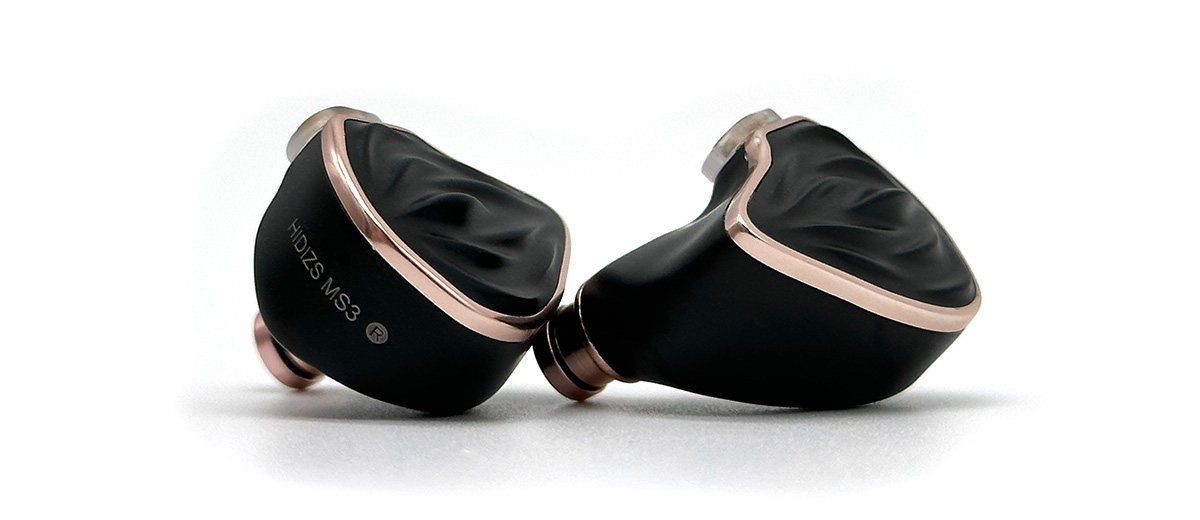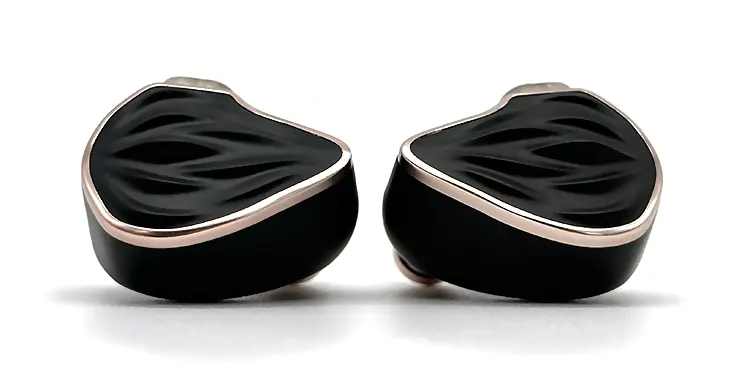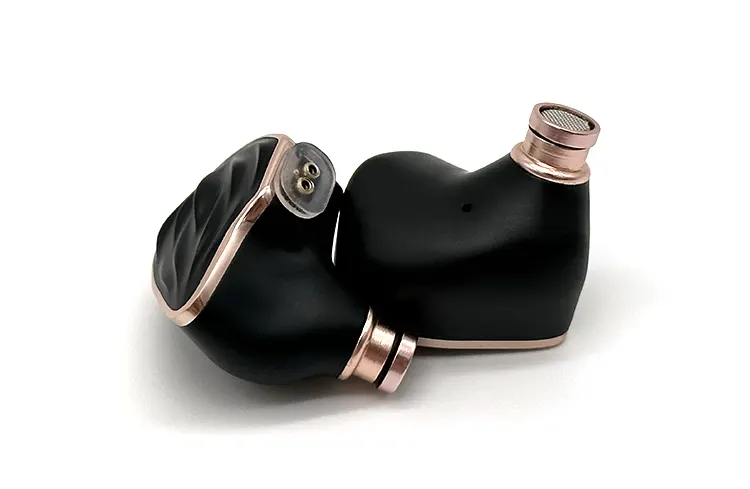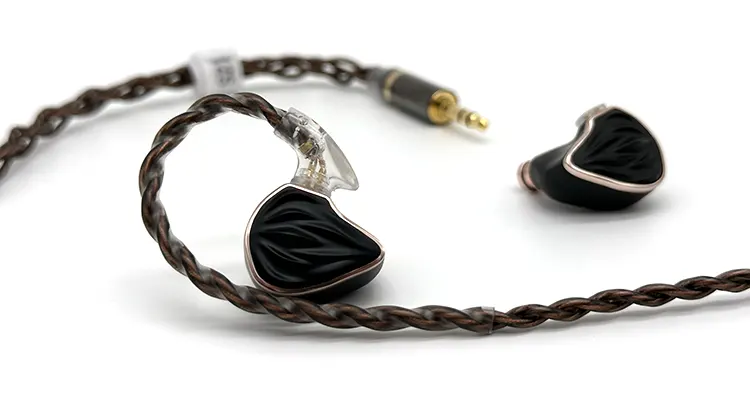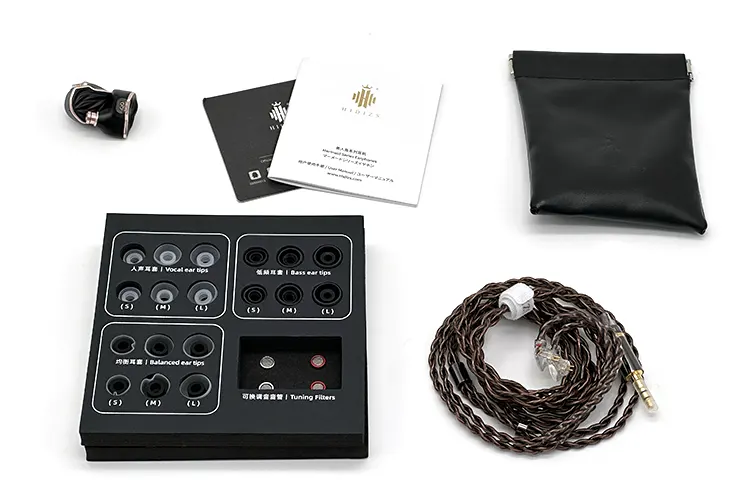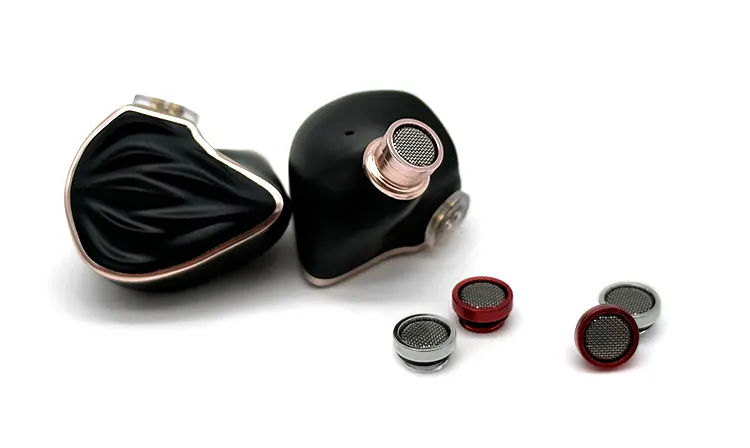In this feature, we review the Hidizs MS3, which is a new hybrid triple-driver universal in-ear monitor featuring pneumatic tuning filter technology. It is currently priced at $119 with an SRP of $169.
Disclaimer: This sample was sent to us in exchange for our honest opinion. Headfonics is an independent website with no affiliate links or status. We thank Hidizs for their support.
To read more about Hidizs products we have previously assessed on Headfonics click here.
Please note, that this article follows our current scoring guidelines which you can read in more detail here.
Only one out of all the current IEMs under the Mermaid series of Hidizs bears similarity to what we have for review today, the MS5.
Dubbed the “Dark Angel”, the MS5 when it was released appeared out of nowhere since it is an unanticipated move for the company to use a fresh new look and incorporate drivers from Sonion which they haven’t done before.
Now that the original novelty of the MS5 has probably reached its peak and its target audience is already satisfied, Hidizs is taking a chance to cast a wider net by offering a lighter version for the wallet.
Reducing the BA driver count from four down to only two, the MS3 is the latest IEM joining the Mermaid line that won’t break the bank.
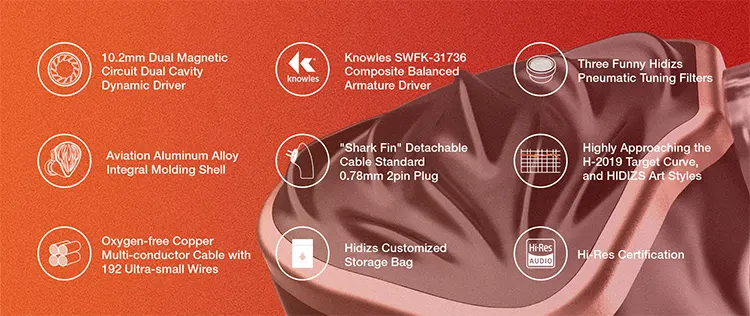
Tech Highlights
Bearing three drivers in each earpiece, the MS3 uses a third-generation in-house designed dynamic driver paired with two balanced armatures from Knowles.
The 10.2mm dynamic driver comes with dual magnetic circuits and dual cavities independently developed by Hidizs, and its diaphragm is a bio-nanofiber composite material. I believe the concept is engineered newly and differently from the MS5 despite their close relationship.
I’m somewhat having a hard time appreciating the jump back to Knowles BA drivers after the buildup Hidizs did for Sonion in their MS5 release. Still, it is nice that they are using Knowles SWFK-31736 balanced armatures to extend the higher frequencies which should draw more airiness.
The tuning of the MS3 is made to follow the H-2019 graph but of course with some individualism from the company. Not only this, with removable nozzles, the MS3 has three flavors to choose from which can be replaced to match any mood.
Design
With only a few cosmetic changes seen mostly in the faceplate of the MS3, it is almost entirely the same IEM as the MS5 visually. Hidizs is no longer using the same ‘Dark Angel’ tagline in the marketing materials of the MS3 online but the wings concept remains and closely ties the two together.
I don’t know if they will continue using this design for future in-ears but seeing the MS3 after I just reviewed the MS5, my impression of it is no longer as inquisitive.
Seeing the relationship instantaneously, the MS3 could be described as the angel’s younger form noting that it doesn’t have as much aggressiveness as the MS5. Without the reflective material and mesh peeking through, the MS3 is more akin to a dark piece of linen with subtle creases.
The rest of the housing is made with aviation-grade aluminum alloy material machined to ergonomically conform to the human ear. The removable filters connect at the end sandwiching a rubber ring to protect the contact between metals.
Comfort & Isolation
Pretty much comparable to the MS5 for the most part, I think Hidizs listened to some of the concerns of the community since the MS3 is now a much better IEM for daily use. It may have gained a bit of weight but the total experience is what matters.
In possessing a sleeker chassis, the MS3 doesn’t have to fight with the angled “shark fin” 2-pin connectors to stay in place. One of the many reasons why I felt the MS5 was uncomfortable is the depth of the nozzle being pushed too inwards by the design.
Another comment I’ve been seeing when the MS5 came out is with the ear hooks. While I enjoyed it personally, some say it is ‘leaned back’ too much causing unnecessary pressure behind the ear. The new cable provided with the MS3 has a lighter curvature but is still uncompromising holding the driver heads in a secure position.
The MS3 no longer has vents in its side cutting outside noise noticeably but nothing out of the ordinary. It can surely be used on the go with ongoing traffic reduced for some music listening.
Tips
To further personalize the MS3 to one’s taste, the tips provided are clearly labeled and divided into three. Visually seeing the purpose of the balanced, vocals, and bass-tuned tips is useful to those that do not want to go through the hassle of testing each one unless of course the fit and seal is an issue upon actual usage.
The balanced tip is what I used for the sound impressions but if I will choose one for comfort it would be the vocal-tuned ones. The latter more quickly disappears when inserted in the ear while the former having a slightly taller and stiffer stem puts more pressure around the ear canal.
Aside from being the shortest and softest option, the vocal tips are given a wide bore which brings the drivers closest to the ears with the least obstruction. Another advantage this brings is that the shell sits more naturally needing fewer adjustments to obtain optimum contact points.
Stock Cable
For their MS3, Hidizs added an option between a 4.4mm balanced cable and a 3.5mm single-ended cable upon checkout. This was not the case for the MS5 which only offered single-ended when it came out. The MS5 costs more but MS3 shoppers have the greater freedom to choose their preference.
The 1.2m cable in either configuration will get a gold-plated earphone jack on one end and a removable 0.78mm 2-pin connector for secure fastening into the two driver heads. First seen on the MS5, the “shark fin” design of the IEM plugs is angled to position the shell inwards for a more secure fitting instead of merely relying on the ear tip and ear guide.
In a braided variety, the 4-core cable is intertwined with enough slack to not be too stiff. This is important since the thickness of each cable is already considerable. Inside, an oxygen-free copper cable is used. Hidizs emphasizes the great harmonization of the cable they supplied with the dynamic and balanced armature drivers of the MS3.
One minor observation about daily usage is that the chin splitter is a bit hard to move around. At least it stays in place when already set.
Packaging & Accessories
Adjacent to the MS5 it may be in physical appearance the items coming with the MS3 makes more sense in a different packaging. Looking at other products I’ve come across from Hidizs, their MD4 is the one that uses the same watch box container. The almost cubic packaging is well presented with graphics in front and the spec details at the back.
Why I think the box is more proper for the MS3 and not the rectangular one used by the MS5 are the three different layers of experience that awaits.
To those that know that the MS3’s design is supposed to mimic angel wings, opening up the cover will show the left and right earpiece set ideally to imagine this. Hidizs could have used the chance to add an illusion in the middle of an angel to complete the image.
Continue to the second layer to gain access to the three types of tips with three sizes each. Also, with the removable nozzle, coming as standard are two more tuning filters for treble and bass in addition to the one already installed.
A custom PU pouch where the cable is safely stored plus some paper works is hidden in the last layer. That’s right, there is no hard case like the MS5 but the included purse is at least customized to bear the brand name for recognition and its spring steel mechanism for shutting is confident.
Sound Impressions
The following impressions were completed using the Chord Electronics Mojo 2 and the Earmen Angel as the main sources with a Smartphone and a Macbook as transports.
Summary
It’s been raining here for a couple of weeks now and the MS3 has been my trusty companion appreciably complementing the pop songs I’ve been playing. The body of the low-end collecting with the space and tuning of the upper ranges assures that nothing will sound too out of place.
Adding flavor, richness comes out from pulses of kick drums that set the mood. I’m also enjoying the punch of the dynamic driver and its organic transmission.
The MS3 could use a bit more dynamics and delineation though to not mask out the thump inside a soft-sounding wall. It’s just nice that the manifestation is there but when a vocal-heavy song comes in, the tonal balance equalizes to not sound too tilted.
The midrange timbre is exhibited more respectfully but it is not exactly sweetened nor muted. A more noticeable depiction I get when listening to singers and stringed instruments is a very subtle but distinct breadth that adds some casualness to the picture. Then comes the whispery notes that get a boost in expression though details are a bit brisque, pulling back on realism.
I also played some rock songs with the MS3 and here I would say the hybrid drivers did an excellent job of balancing vitality with listening pleasure. Instead of completely leaning one way, the MS3 was able to sift through a brash section pulling enough detail to work out the different instruments without one overtaking the other.
Filters
Switching between filters is not exactly quick but the difference is easy enough to distinguish that it does make sense to at least try each one out first. I would honestly say though that in the case of the three options available, I liked the default and silver filters whereas I would personally use the red the least.
It may suit other people’s preferences but the bass-tuned nozzle for me changed the personality of the MS3 the most. The dip in midrange presence that extends to some peaks and valleys in the higher frequencies is sometimes jarring disconnecting it from what it has achieved with the default tuning. The low-end also lost some subtleties and became a bit blurry when compared.
Some may find taking more time to decide between the rose gold and silver tuning filters. While their personality is very different, both reveal the true capacity of the hybrid drivers.
It can be that some clarity is gained in the leaner and smaller images made by the silver filters supporting basslines to catch attention more easily. A more diffusive characteristic and scale however can be expected with the default tuning.
Strings appear brighter on the silvers. What I didn’t expect in the lift in energy is that it carefully didn’t seize the scene as it became a bit airier and more distant to counterbalance. Still, the rose gold ones will give broader piano keystrokes and richer notes while the other is providing more urgency.
Click on page 2 below for our suggested pairings and selected comparisons.

